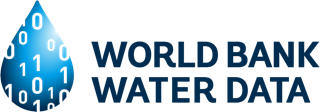The Iraq Household Socio-Economic Survey conducted in 2006-2007 (IHSES 2007), was Iraq's first nationwide income and expenditure survey since 1988. Based on the model of the Living Standards Measurement Surveys, it covered more than 18,000 households, collected detailed data on all aspects of household income and expenditure and generated information on a wide variety of socio-economic indicators. It also formed the basis for updating the Consumer Price Index (CPI), from an outdated index based in 1990 to a revised index with the base year of 2007. Detailed analysis of poverty, its incidence, characteristics, determinants and consequences, was undertaken using this comprehensive survey. Under the overall guidance of the Poverty Reduction Strategy High Committee (PRSHC) and a technical sub-committee, a poverty line was defined and adopted by the Council of Ministers. Six years later, in 2012, the second round of the IHSES was completed. Learning from past and international experience on survey design, implementation and sampling, IHSES 2012 also incorporated additional modules on areas of evolving interest. It is the most comprehensive socio-economic survey as yet undertaken in Iraq. Objectives of the survey: 1) to provide data to help measure and analyze poverty and monitor the implementation of the national strategy to alleviate poverty (issued in 2009) and update it with a new strategy, 2) to provide an integrated system of data to assess the social and economic situation of families and develop indicators related to human development, 3) to provide data meeting the requirements and needs of the national accounts, 4) to provide detailed indicators of consumer spending and the impact of various changes in it to serve the production, consumption, export and import decision-making, 5) to provide detailed indicators of the incomes of individuals and families by source, 6) to provide the data required for creating a new index record of consumer prices beyond 2012.


